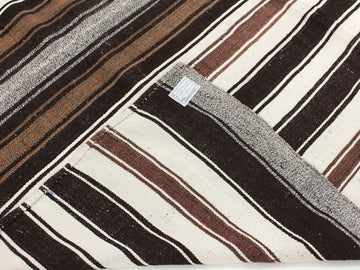The hallmarks of Turkish rugs are their intricate designs, vibrant colors, and exceptional craftsmanship. Traditionally crafted from durable local wool, with silk incorporated in more luxurious pieces, these rugs are renowned for their quality and longevity.
Turkish rug making, a craft with roots reaching back to at least the 13th century, represents a rich tapestry of cultural heritage. This art form reached its zenith during the Ottoman Empire, evolving from a nomadic tradition into a sophisticated craft centered in major cities.
The weaving process employs the double knot technique, also known as the Turkish or Ghiordes knot. This method creates a dense, durable pile, with the knot density indicating the rug's quality.
Colour plays a crucial role in Turkish rug design. Historically, dyes were derived from natural sources: madder root for red, indigo for blue, and saffron for yellow. The patterns often carry symbolic meaning, but we favour the more geometric shapes instead of floral motifs.
While machine-made rugs have become more prevalent, there remains a strong market for handcrafted pieces. Many artisans continue to use traditional techniques, preserving this cultural legacy.

